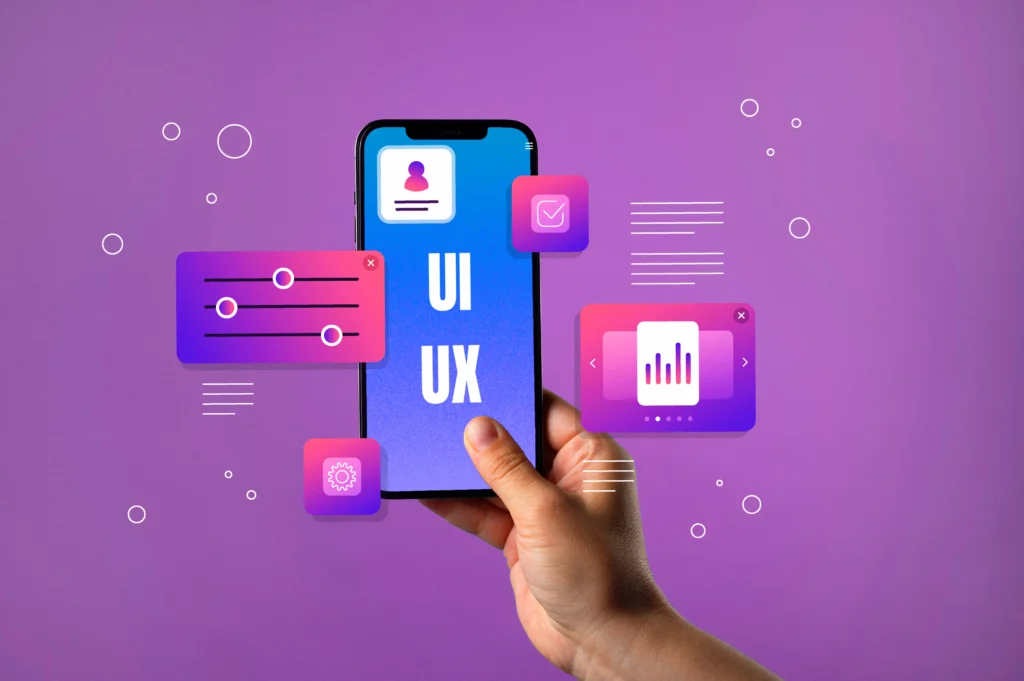In today’s competitive digital era, first impressions are often formed within seconds. A user’s decision to engage with your brand can be influenced by something as simple as a button’s placement or the spacing between menu items. That’s why strategic UI design has become more essential than ever. It goes beyond just looking good—it’s about creating intuitive and meaningful user experiences.

What is UI Design and Why Does it Matter?
User Interface design is the process of creating interfaces that are visually appealing, easy to use, and aligned with a brand’s identity. It focuses on the aesthetics and interactivity of a digital product. From websites to mobile apps and software platforms, UI design plays a crucial role in determining how users interact with your digital presence.
Good design ensures that users can navigate effortlessly, find what they’re looking for quickly, and complete their tasks without friction. A poorly designed interface, on the other hand, can confuse users, increase bounce rates, and hurt your bottom line.
Key Benefits of UI Design
1. Improved User Engagement
A well-structured and thoughtfully crafted interface increases the amount of time users spend interacting with your platform. When users enjoy their experience, they’re more likely to return, share it with others, or even make a purchase.
2. Higher Conversion Rates
User interface design isn’t just about aesthetics—it’s a powerful tool for driving conversions. With clear call-to-actions, visual hierarchy, and smooth navigation, businesses can guide users toward desired outcomes, whether it's completing a form, booking a service, or making a purchase.
3. Better Brand Perception
Consistency in design builds trust. Through elements like color schemes, typography, icons, and layout, UI design communicates your brand identity. A seamless and professional-looking interface helps establish credibility and authority in your niche.
4. Lower Development Costs in the Long Run
Investing in high-quality UI design at the early stages of a project can help avoid costly revisions later. It minimizes usability issues and streamlines the user journey, saving time and money during development.
UI Design vs UX Design: Understanding the Difference
While both UI and UX are closely related, they serve distinct purposes. UX (User Experience) focuses on the overall functionality, structure, and satisfaction a user derives from interacting with your digital product. UI design, in contrast, zeroes in on the look and feel—everything from buttons and icons to spacing and typography.
Think of UX as the blueprint of a house, while UI is the decoration and furniture. Both are essential, and when combined effectively, they result in a product that is not only functional but also delightful to use.
Core Elements of a Strong UI Design
- Visual Hierarchy: Guides users through the content based on importance and flow.
- Consistency: Ensures elements like buttons, text, and interactions behave the same throughout.
- Accessibility: A great UI design considers users of all abilities and devices.
- Responsiveness: Interfaces must look and function well across all screen sizes.
Industries That Rely on UI Design
Virtually every industry benefits from UI design, especially those with digital customer touchpoints. In e-commerce, healthcare, fintech, education, and SaaS, effective UI can dramatically influence customer satisfaction and loyalty.
For example, in the e-learning space, platforms with user-friendly interfaces tend to see better completion rates and more student engagement. In fintech, intuitive dashboards and clean interfaces help users manage their finances with confidence.
Choosing the Right UI Design Partner
If you’re seeking a design partner who understands both functionality and aesthetics, Kriz Digital offers premium UI design services tailored to your brand. Their expert team focuses on clean, intuitive, and scalable design systems that keep users engaged and returning for more.
For those looking to learn more about trends and techniques in UI , check out industry resources such as UX Collective on Medium or Nielsen Norman Group—both offer valuable insights into evolving digital experiences.
The Future of UI Design
UI design is evolving at a rapid pace. With the integration of voice-controlled interfaces, gesture-based navigation, and AI-driven personalization, the future will revolve around creating interfaces that are not only smarter but also more human-centered.
In addition, trends like dark mode, glassmorphism, and neumorphism are influencing how users engage with digital platforms. Staying updated with these trends helps businesses remain competitive and relevant.
Conclusion
UI design is the foundation of every successful digital product. It not only enhances the visual appeal of your platform but also improves usability, engagement, and conversion. Whether you’re launching a new app, revamping your website, or designing enterprise software, prioritizing UI will yield long-term results. It’s more than just design—it’s the bridge between your brand and your users.
